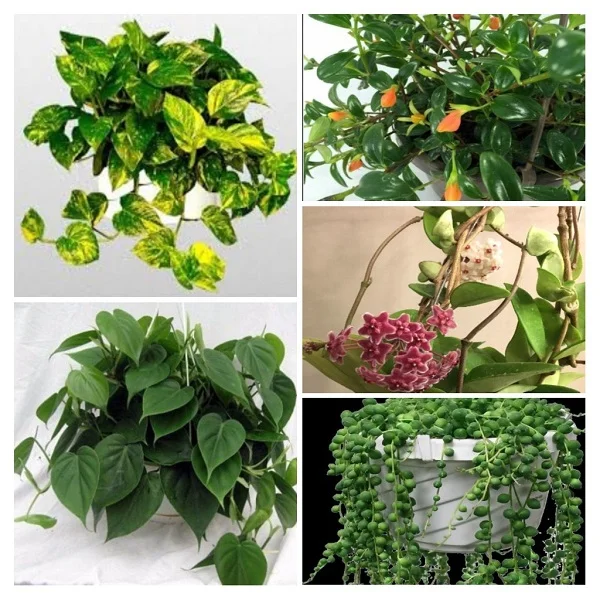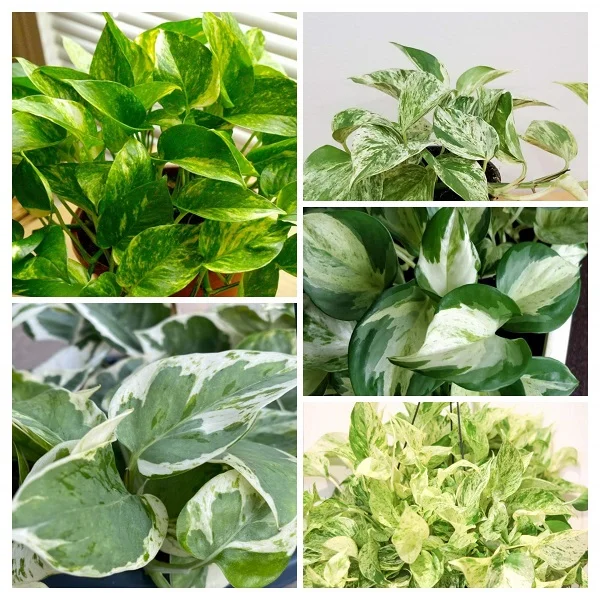16 Best Low Light Indoor Plants that will Thrive in Dark Spaces
Some links in this post may be affiliate links
Low light indoor plants are those plants that will adapt very easily to low light or shade conditions and continue to brighten up such dark spaces.
These plants are a perfect choice for a dark apartment or a corner of the house that does not receive much natural light.
It is important to note that, the growth of these plants may be slower in these conditions. If possible consider investing in grow lights to hasten growth of the plant.
We have herebelow outlined for you 16 plants that will adapt to the low light conditions but not total darkness as all plants require some light for photosynthesis.
16 Low Light Houseplants for Dark Spaces
Our choice of the best low light plants include Pothos, Chinese Evergreens, Finger-leaf Philodendron, Cast Iron Plant, Snake Plants, Monstera dubia, ZZ Plant, Peperomia Jelly among others. Keep reading for the complete list below.
1. Chinese Evergreen (Aglaonema modestum)

The all green Chinese Evergreen is one of the houseplants that is highly tolerant to low light conditions.
Chinese Evergreen is regarded as one of the most tolerant and reliable houseplants. It has also been shown to be an ideal indoor air cleaner.
Aglaonema thrive in medium to bright light away from direct sunlight, warm and humid conditions and moderately moist, well-drained soils that are rich in organic matter.
Read more on how to grow and care for Chinese Evergreen (Aglaonema modestum)
2. Snake Plant (Dracaena trifasciata)

Snake Plant is one of the plants with a tough constitution. This plant is slow growing, low maintenance and extremely hardy (almost indestructible).
Snake Plant can withstand low light, dry air, draughts and periods of dryness. It is also known for its air cleaning properties.
The only drawback for Snake Plant is root-rot which is brought about by waterlogging.
Learn more on how to grow and care for Snake Plant (Dracaena trifasciata)
3. Cast Iron Plant (Aspidistra elatior)
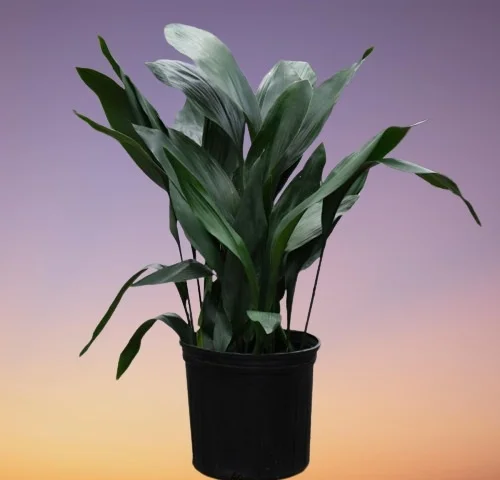
As the name suggests, Cast Iron Plant is one of the hard to kill plants that will easily adapt to lower light even shade conditions.
Cast Iron Plant is an extremely slow-grower which will withstand periods of dryness at the roots and some level of neglect making it one of the best plants for a beginner.
Aspidistra elatior prospers in bright light away from direct sunlight (filtered light), average warmth of 15-260C, moderate humidity of 50-55% and moderately moist, fertile, well-drained, succulents soil coupled with monthly feeding during the growing season.
Read more on how to grow and care for Cast Iron Plant (Aspidistra elatior)
4. Pothos (Scindapsus aureus)
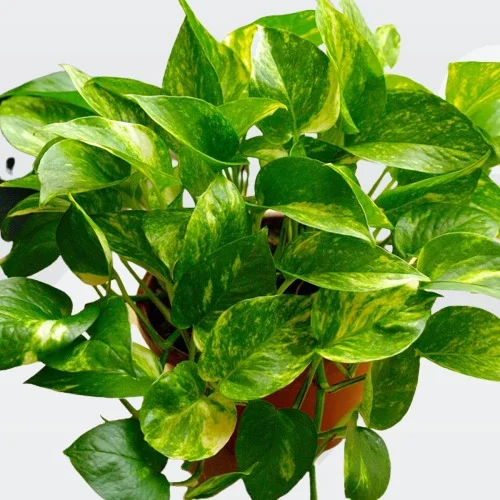
Pothos also called Devil's Ivy or Money Plant has a high ability to withstand a wide range of growing conditions.
Pothos can tolerate low light or shade conditions, draught and excess moisture. It does well in the hardest of conditions.
If maintained with moderate watering, in a loose, well-drained potting mix coupled with regular feeding, Pothos will thrive.
Learn more on how to grow and care for Pothos (Scindapsus aureus)
5. Philodendron elegans (Finger-leaf Philodendron)

Finger-leaf Philodendron also called Skeleton Key Philodendron is one of the sought-after Philodendron plants varieties on account of its size and highly divided stately leaves which come in various shades of green and have a glossy sheen. They are highly divided which gives them the appearance of a palm's frond.
Skeleton Key Philodendron has a creeping and a climbing growth habit. Like Silver Sword Philodendron (Philodendron hastatum), Spadeleaf Philodendron (Philodendron domesticum), Blushing Philodendron (Philodendron erubescens), Philodendron scandens (Heartleaf Philodendron) and Philodendron ilsemanii 'Variegata' it requires to be given a moss pole or a trellis to give it support to grow upright.
Philodendron elegans thrives in medium to bright indirect light (filtered light), average warmth of 16-280C, humidity of 60-70% and moderately moist, rich, well-drained, all purpose potting mix coupled with monthly feeding during the growing season.
Read more on how to grow and care for Philodendron elegans (Finger-leaf Philodendron)
6. Monstera dubia
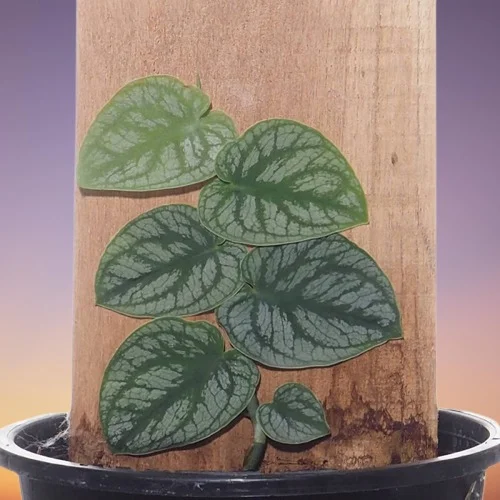
Monstera dubia is one of the popular Monstera varieties which exhibits three different forms in its life stages. The plant leaves grow flat on the support structure which gives the plant the name, 'Shingle Plant'.
Monstera dubia and its relatives Monstera standleyana (Five Holes Plant), Monstera siltepecana (Silver Monstera) and Monstera deliciosa (Swiss Cheese Plant) are low-light plants perfect for any space.
Monstera dubia blossoms in medium to bright indirect light (dappled light), average warmth of 18-290C, moderate humidity of 50-55% and moderately moist, rich, well-drained, Monstera potting mix coupled with monthly feeding in the growing season.
Learn more on how to grow and care for Monstera dubia
7. Foxtail Fern (Asparagus densiflorus 'Meyeri')
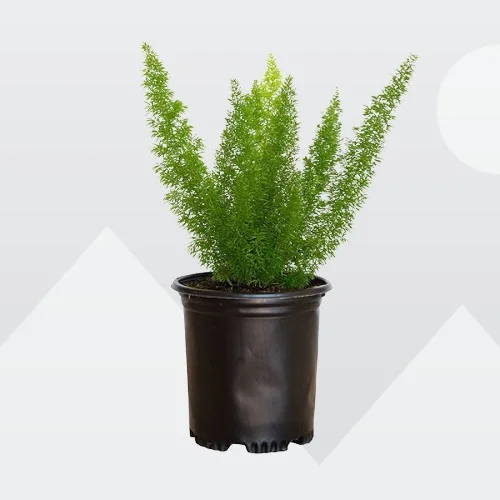
Foxtail Fern also called Plume Asparagus is among the popular ornamental Asparagus ferns mainly grown for the beautiful foliage and texture.
Plume Asparagus and its cousins Emerald Fern (Asparagus densiflorus 'Sprengeri'),Asparagus Fern (Asparagus plumosus), Sicklethorn Fern (Asparagus falcatus) and Smilax Fern (Asparagus asparagoides) are not True Ferns and they easily adapt to lower light conditions.
Asparagus densiflorus 'Meyeri' thrives in medium to bright indirect light, average warmth of 16-280C, moderate humidity of 50-55% and moderately moist, rich, well-drained, all purpose mix coupled with weekly feeding during the growing season.
Learn more on how to grow and care for Foxtail Fern (Asparagus densiflorus 'Meyeri')
8. Japanese Aralia (Fatsia japonica)

Japanese Aralia also called Paperplant is a popular plant with a tough constitution. It grows quickly and is extremely durable.
Japanese Aralia can tolerate a wide range of growing conditions and will not dies from a few days neglect. It is a hardy houseplant.
Paperplant is an excellent specimen (stand alone) plant which bears large eight-lobed leaves and reaching a height of 4ft or more.
Learn more on how to grow and care for Japanese Aralia (Fatsia japonica)
9. Kentia Palm (Howea forsteriana)
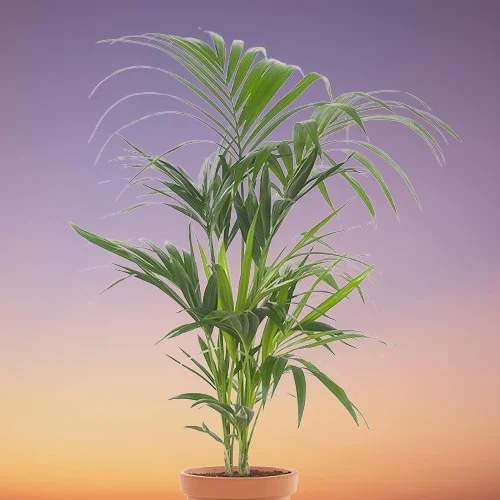
Kentia Palm also called Paradise Palm or Thatch Palm is among the popular palms and bears feathery fronds which are divided into soft, drooping leaflets on either side of the midrib.
Paradise Palm like Parlour Palm (Chamaedorea elegans), Bamboo Palm (Chamaedorea erumpens) and Areca Palm (Dypsis lutescens) has a high tolerance to shade and is also good air cleaner.
Howea forsteriana flourishes in bright indirect light, average warmth of 16-280C, moderate humidity of 50-55% and moderately moist, fertile, well-drained, all purpose soil coupled monthly feeding during the growing season.
Read more on how to grow and care for Kentia Palm (Howea forsteriana)
10. Spider Plants (Chlorophytum comosum)
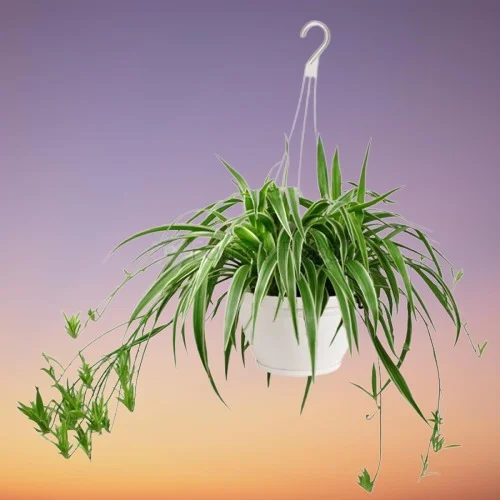
Spider Plants are extremely adaptable to a wide range of growing conditions and will grow in hot or cool rooms, in sun or shade and will withstand dry air.
Spider plants are fast growing, easy to care for and propagate, and are good indoor air cleaners.
They are perfect for a hanging basket, on a tabletop, on a shelf or on a pedestal where they can display the beauty of their stems.
Learn how to grow and care for Spider Plant (Chlorophytum comosum)
11. Madagascar Dragon Tree (Dracaena marginata)
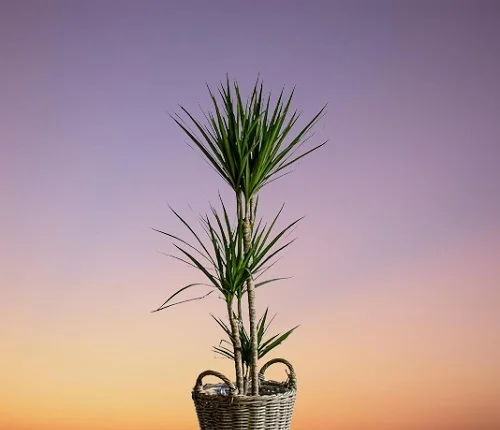
Madagascar Dragon Tree is an excellent stand alone choice for the poorly lit spaces; it adapts easily to a wide range of growing conditions.
The colorful foliage of Madagascar Dragon Tree makes this plant a popular houseplant. It is easy to grow and is also a good indoor air cleaner.
Read more on how to grow and care for Madagascar Dragon Tree (Dracaena marginata)
12. Grape Ivy (Cissus rhombifolia)

Grape Ivy also called Oakleaf Ivy is one of the most tolerant of houseplants.This plant will tolerate sun or shade, hot or cold air, dry or moist conditions.
The leaves of Grape Ivy are silvery first and turn dark-green and glossy as they mature.
Grape Ivy is a vining houseplant that is excellent for a hanging basket, on a trellis, on a pedestal or anywhere the stems can hang downwards beautifully.
Learn more on how to grow and care for Grape Ivy (Cissus rhombifolia)
13. Creeping Fig (Cissus rhombifolia)
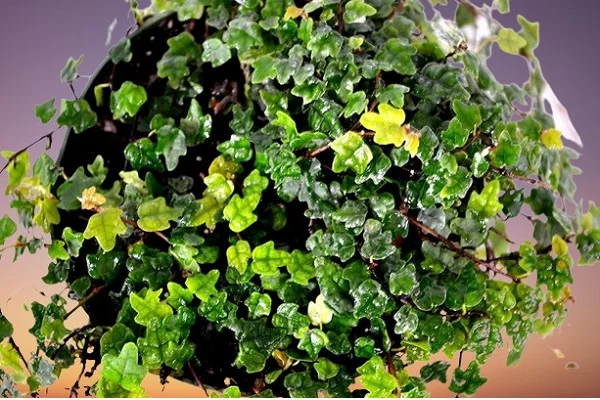
Creeping fig is an easy-care, vigorously growing plant that will do well even in low light conditions.
Creeping Fig is perfect in a hanging basket, on a pedestal, on a table top or plant shelf. It is also a great plant for covering bare spaces between plants in a large planter.
To keep it thriving place it in a warm, moist place like a bathroom and other moist places in the home.
Read more on how to grow and care for Creeping Fig (Cissus rhombifolia)
14. Peperomia Ginny (Peperomia clusiifolia)
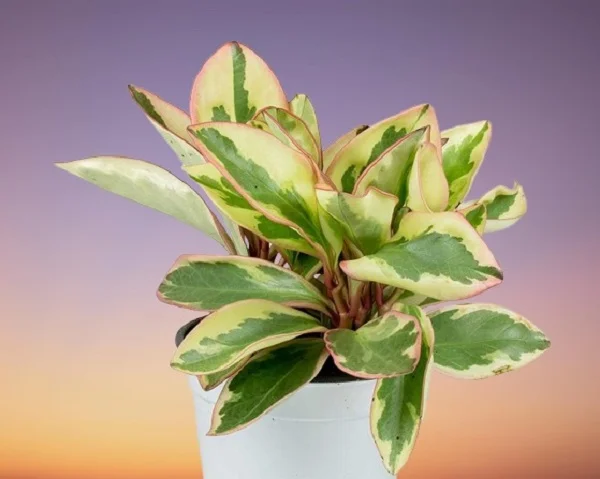
Peperomia Ginny also called Peperomia Jelly, Peperomia Red-edge or Peperomia Tricolor is among the popular Peperomia varieties and bears fleshy, oval-shaped leaves that are pointed at the tips and are often light-green with darker green coloring in the center and red or pink edges. They feel like jelly to the touch and hence the common name.
Peperomia Jelly and its relatives Peperomia prostrata (String of Turtles Plant), Peperomia rotundifolia (Trailing Jade Plant), Peperomia angulata (Beetle Peperomia), Peperomia verticillata (Red Log Plant), Peperomia orba (Teardrop Peperomia) and Peperomia scandens 'Variegata' are low-light plants ideal for a hanging basket, tabletop, desktop, pedestal or plant shelf where the trailing stems can beautifully cascade downwards.
Peperomia clusiifolia flourishes in medium to bright indirect light (filtered light), average warmth of 15-260C, humidity of 60-70% and moderately moist, fertile, well-drained, all purpose potting mix coupled with monthly feeding during the growing season.
Learn more on how to grow and care for Peperomia Ginny (Peperomia clusiifolia)
15. ZZ Plant (Zamioculcas zamiifolia)
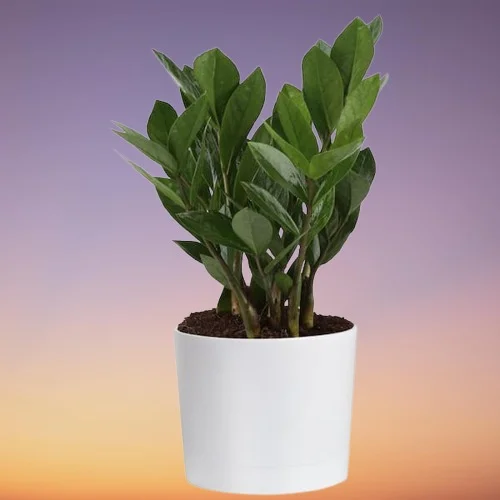
The ZZ plant also called Zanzibar Gem, Zuzu Plant or Emerald Palm is highly tolerant to low light and dry conditions.
ZZ Plant can survive extremely well under low light for up to 4 months without water. It is a highly tolerant succulent plant.
The Zanzibar Gem is a splendid, easy care plant with attractive, glossy foliage and is spectacular in any space.
Read more on how to grow and care for ZZ Plant (Zamioculcas zamiifolia)
16. Bird's Nest Fern (Asplenium nidus)

Bird's Nest Fern is an easy to grow plant that is highly adaptable to low light conditions.
The bird's nest Fern prefers warm and moist conditions which means it is perfect for a bathroom and other moist areas.
On account of its large size, Bird's Nest fern is magnificent as a statement (stand alone) plant which will fill any large space.
Learn more on how to grow and care for Bird's Nest Fern (Asplenium nidus)

